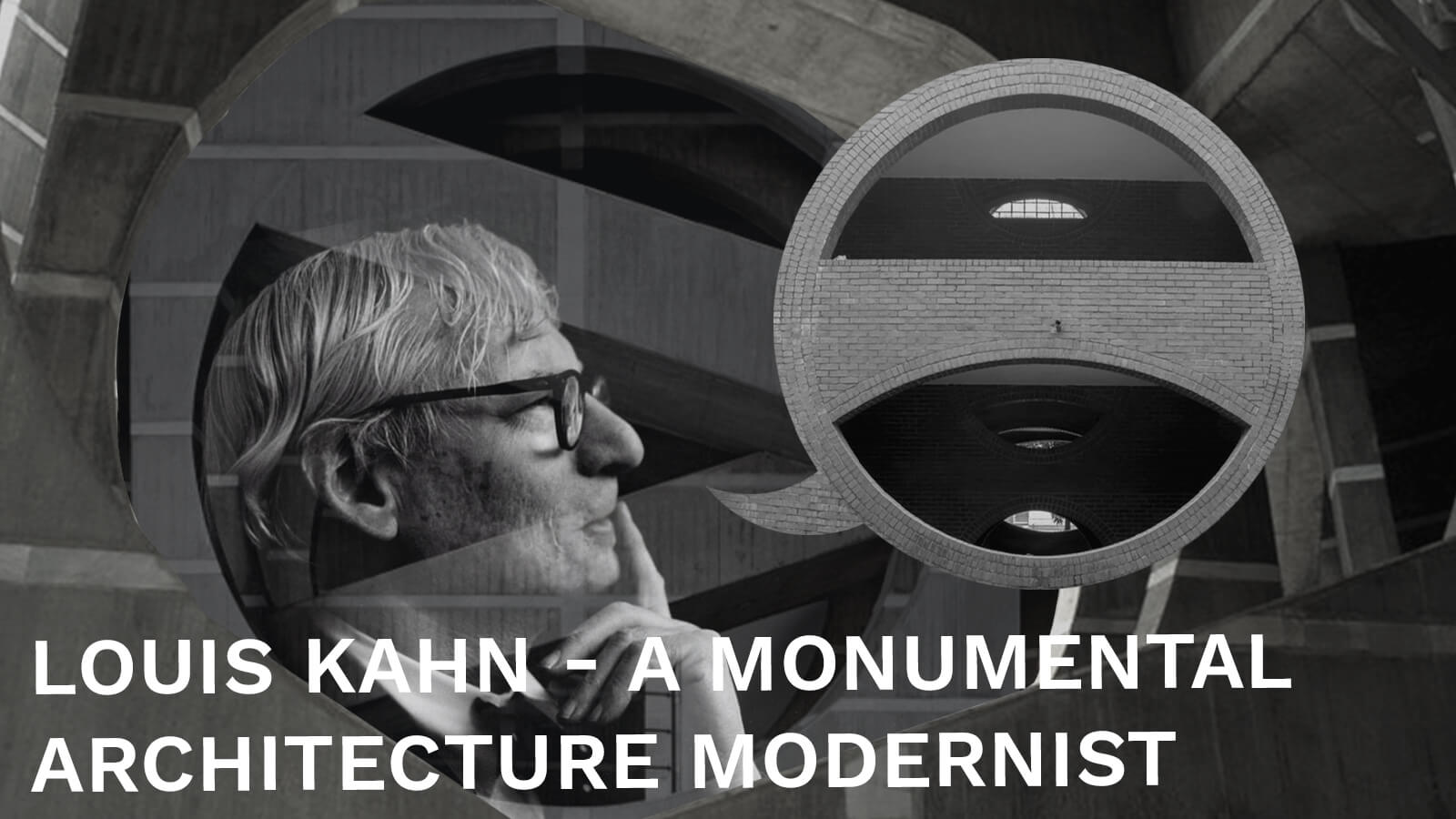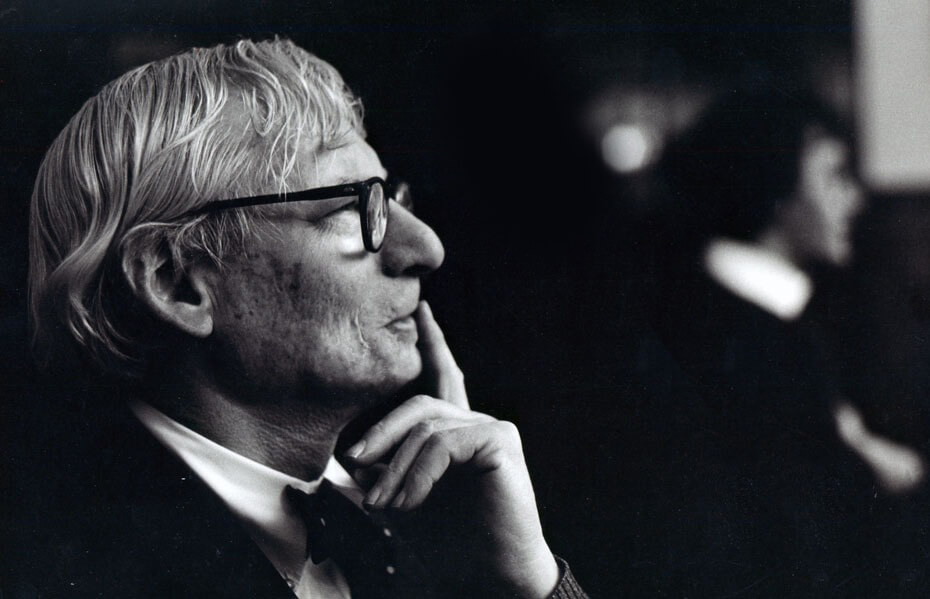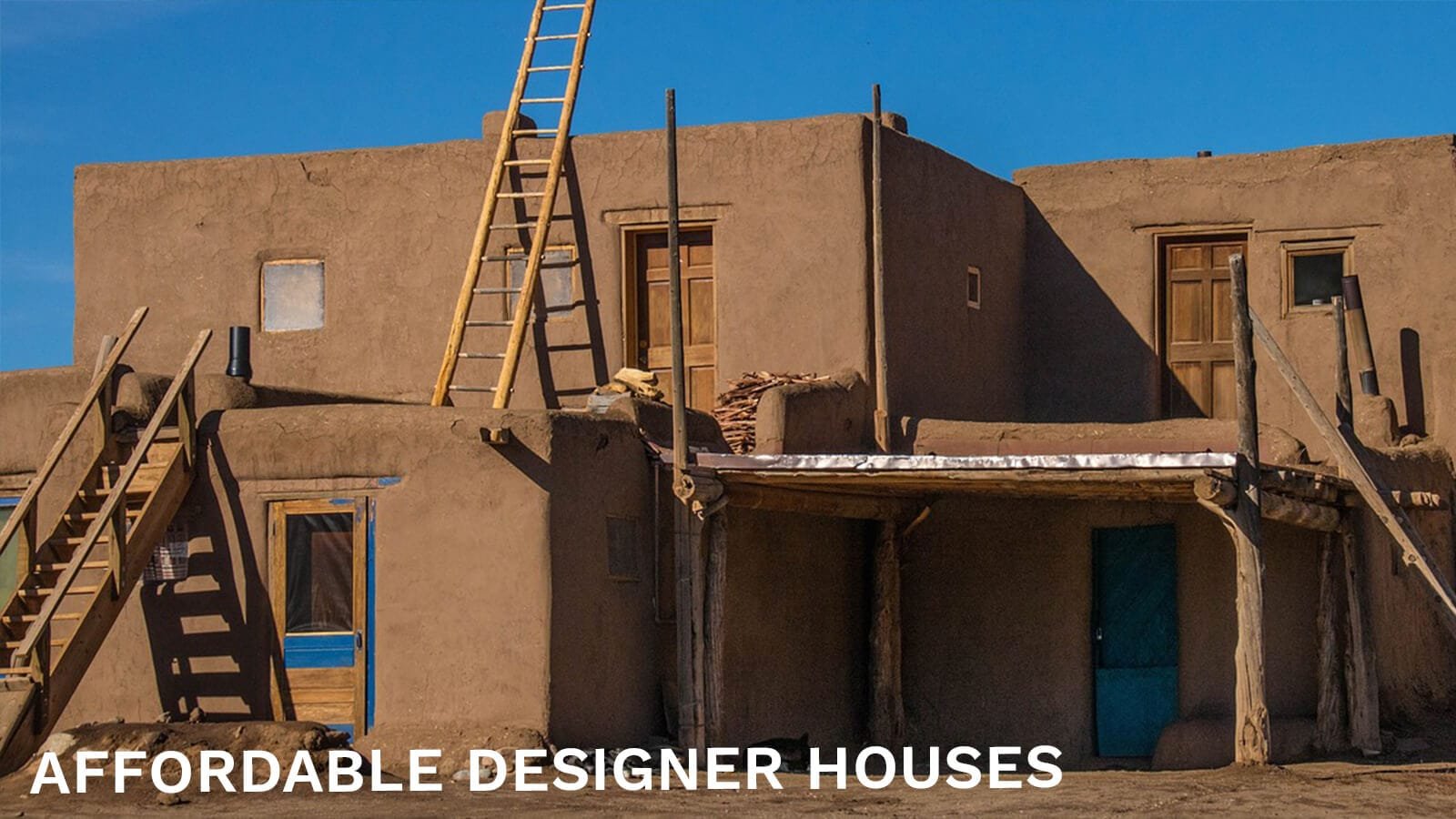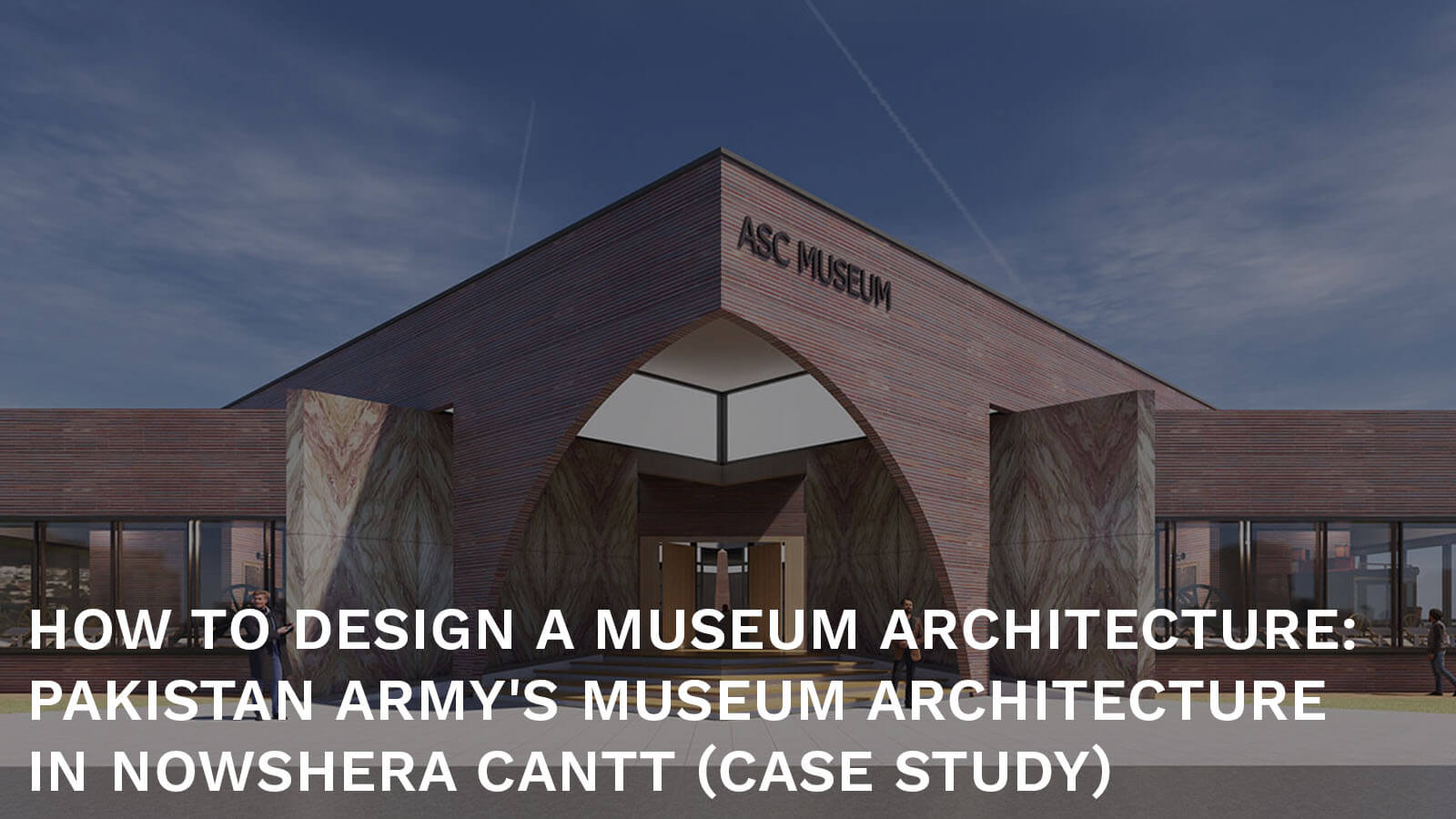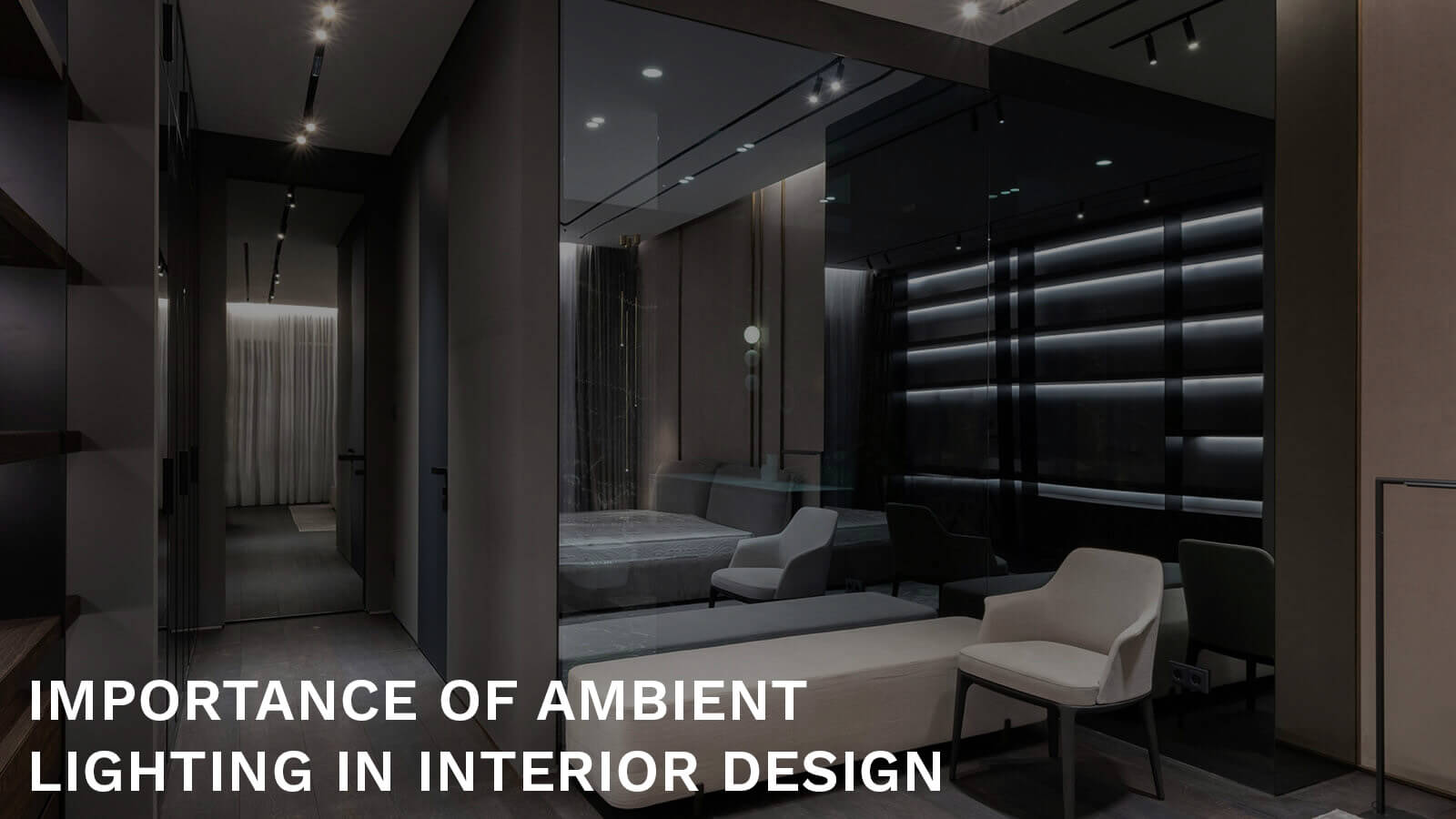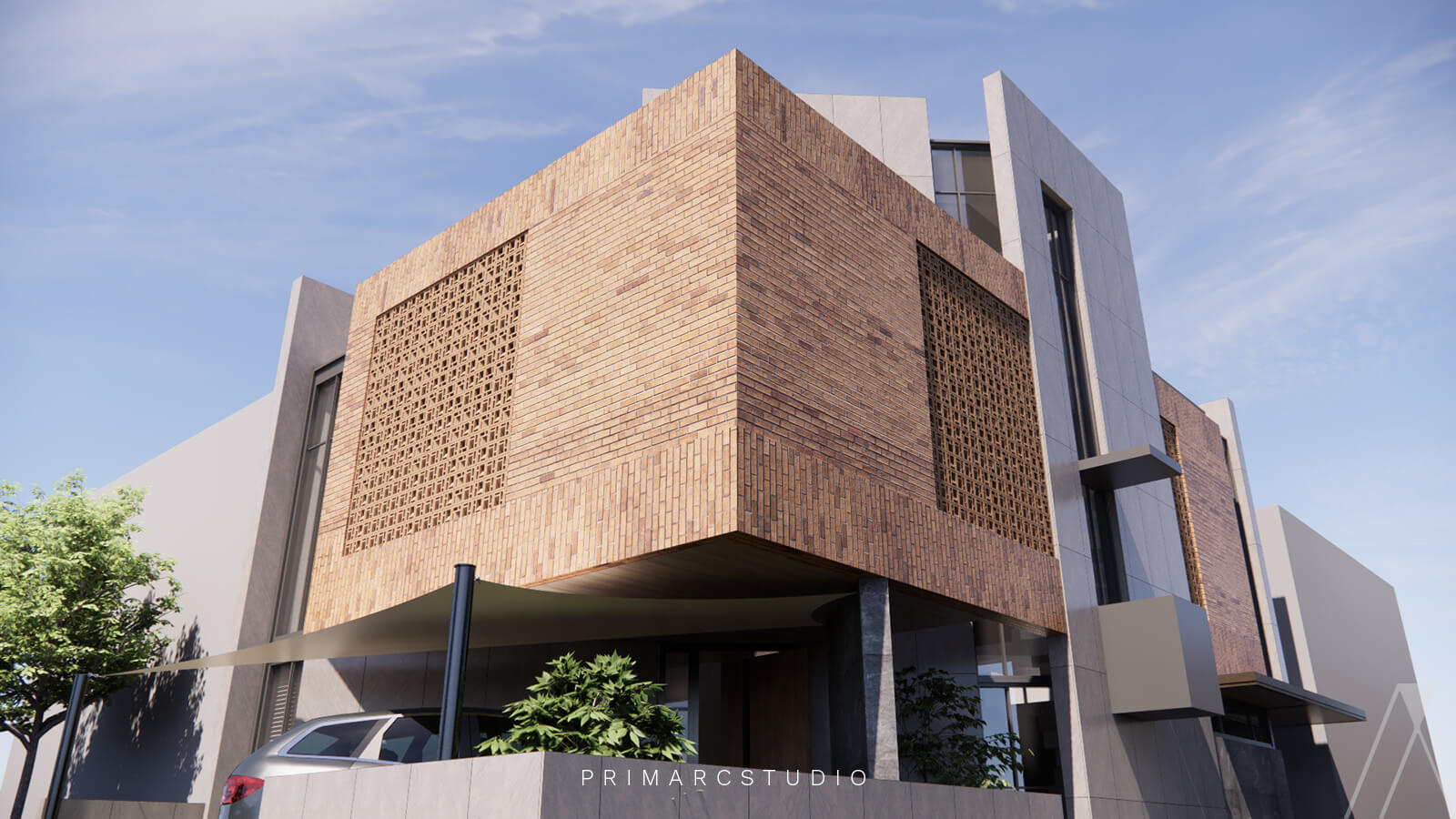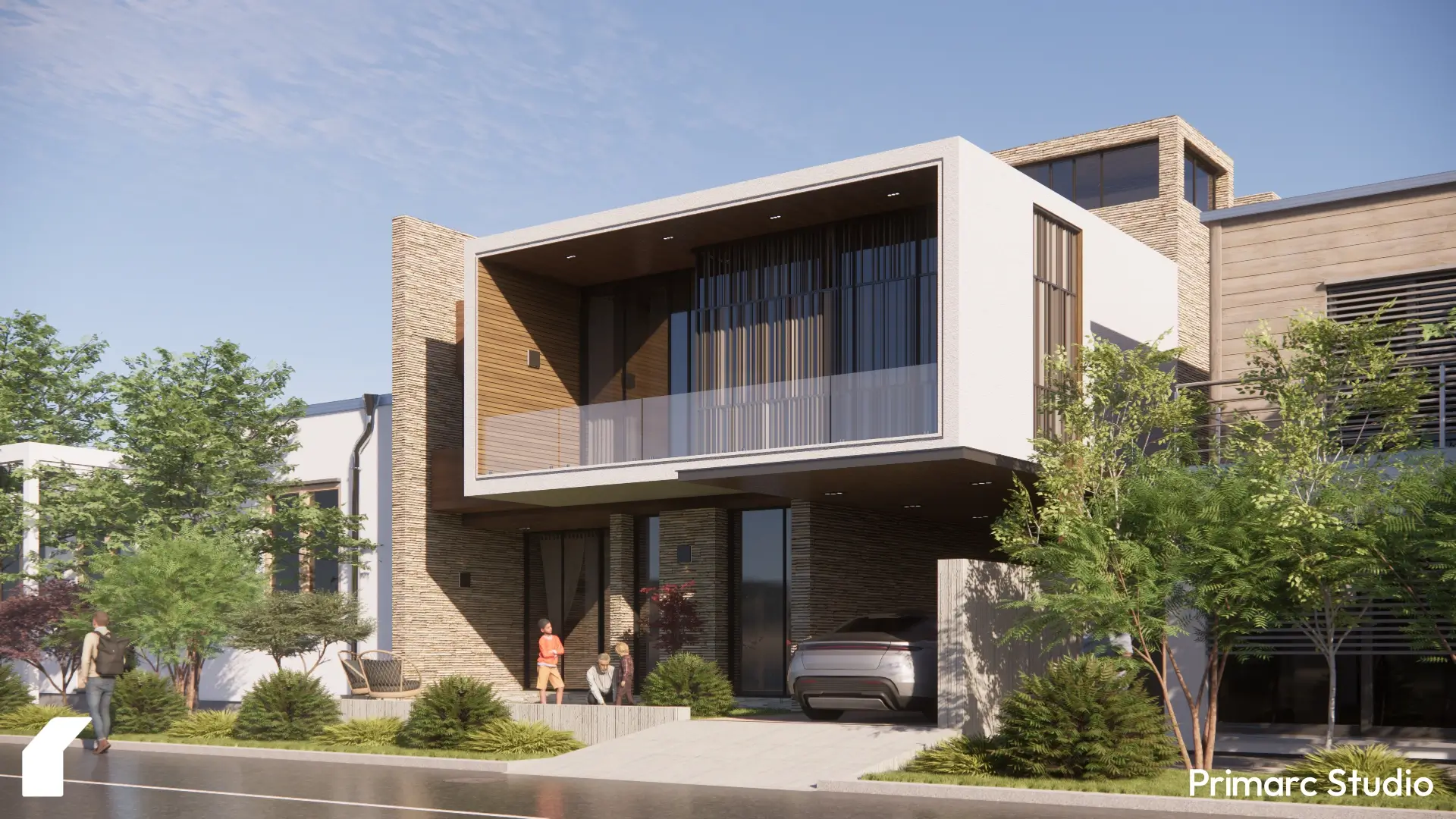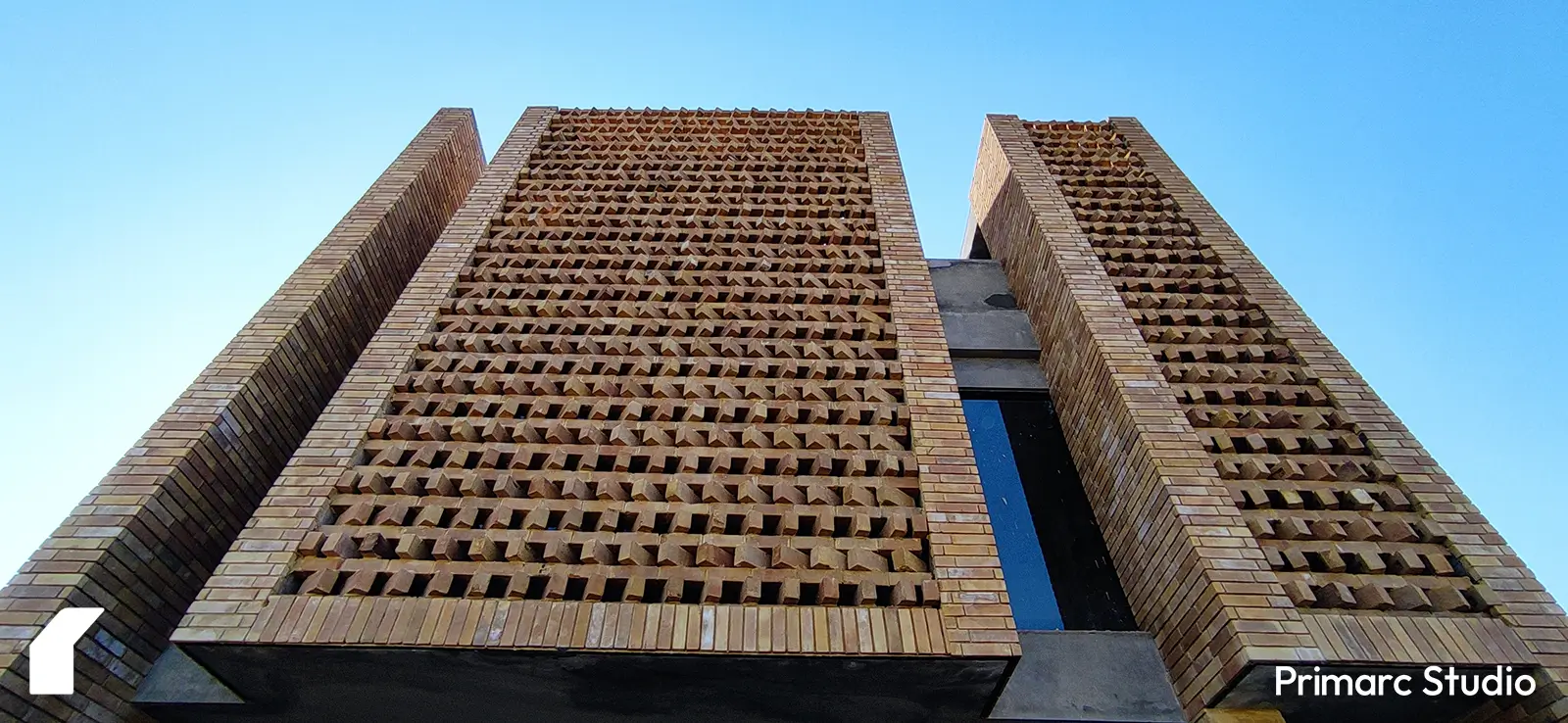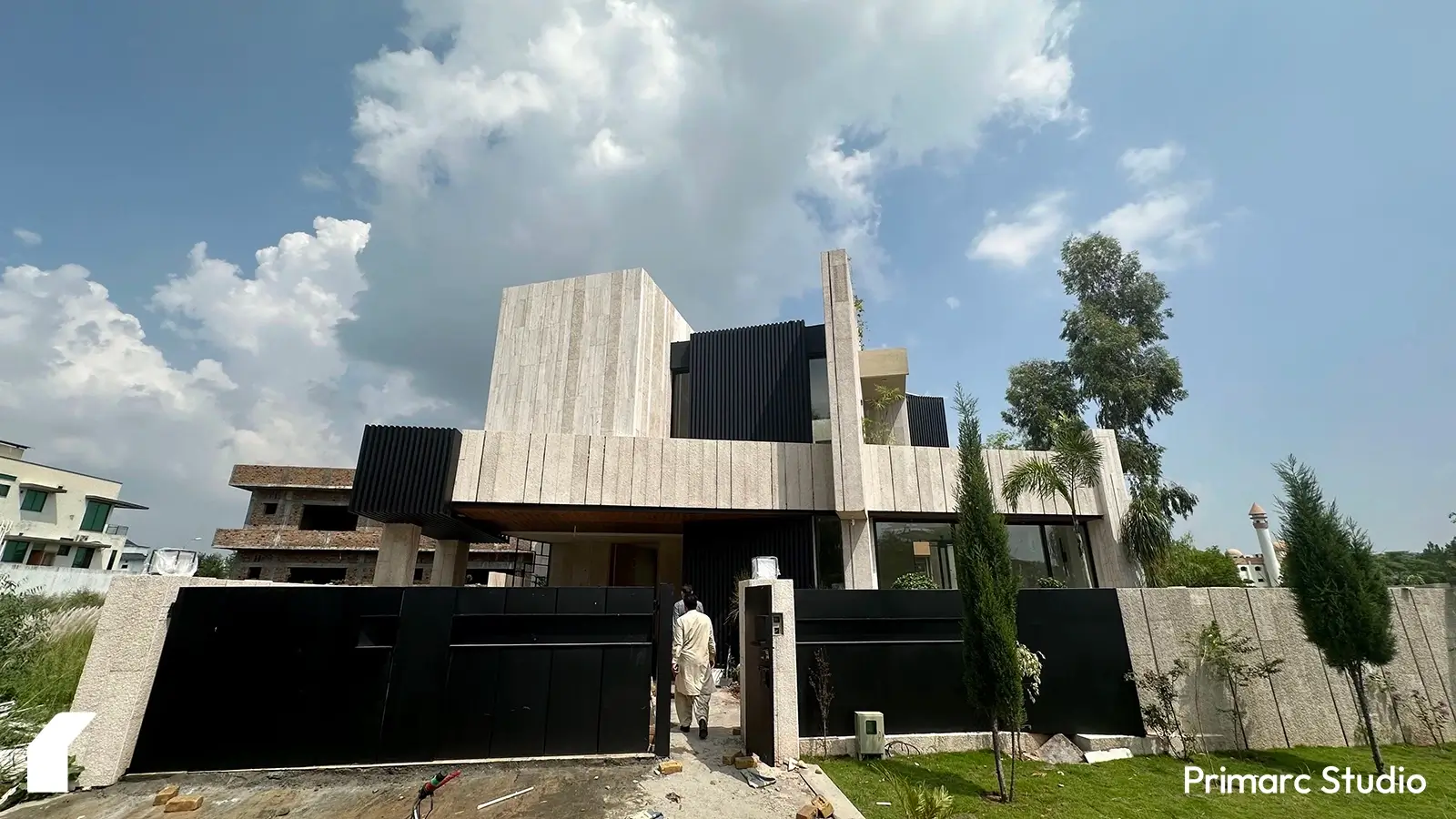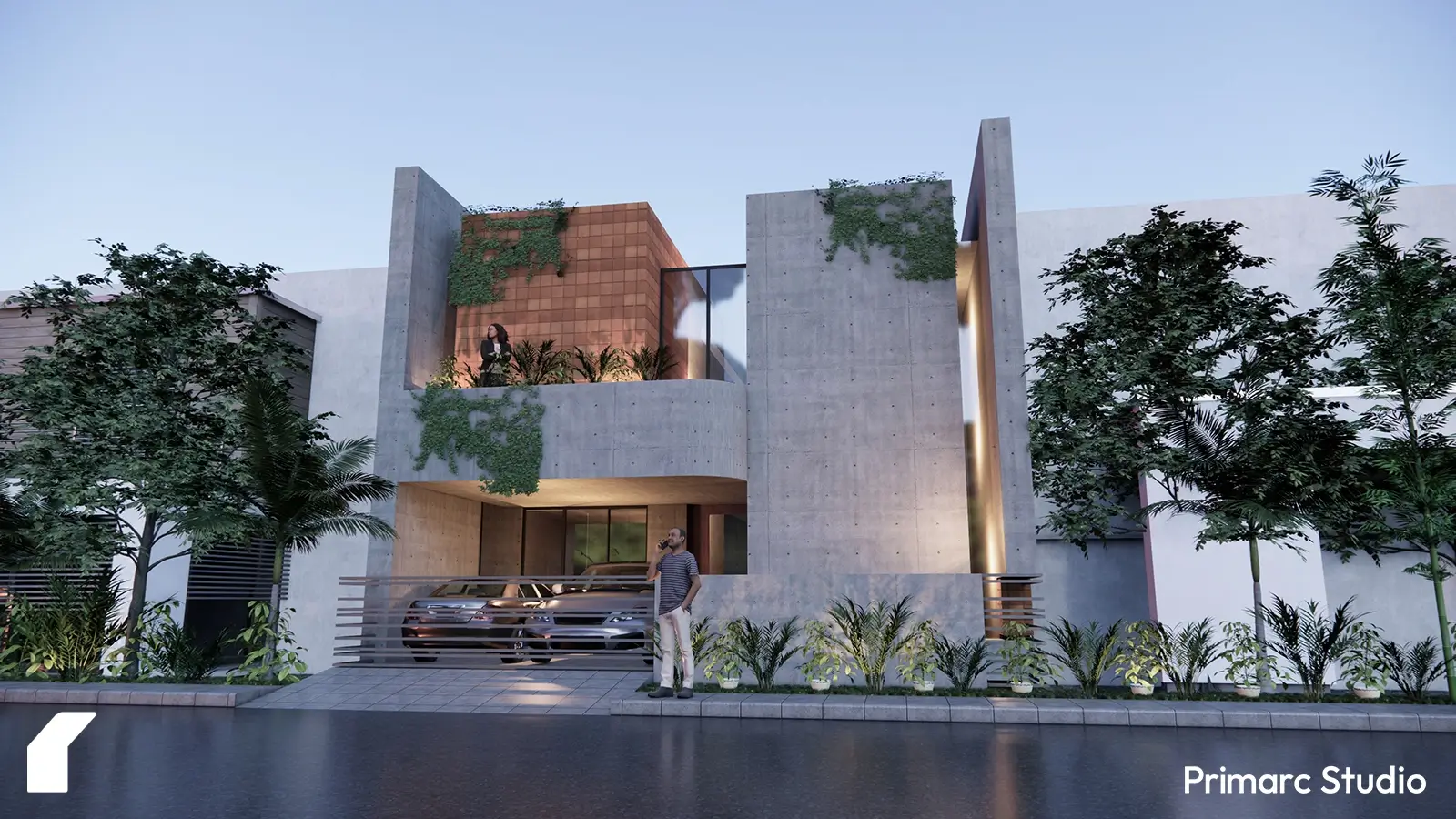Louis Isadore Kahn – Architectural Genius and Visionary
Nationality: American
Working era: 20th Century
Design Philosophy: “We are born of light. The seasons are felt through light. We only know the world as it is evoked through light.”
Thematic approach: His designs combine modernism and his poetic philosophy uniquely. He favours geometric and symmetrical structures (circular arches, triangular grid ceilings, etc.) that elevate the user’s experience through the otherworldly interplay between shadow and light.
Notable works: The Salk Institute for Biological Studies La Jolla, California, Yale University Art Gallery, Phillips Exeter Academy Library and Dining Hall, Franklin D. Roosevelt Four Freedoms Park Roosevelt Island, New York.
Louis Isadore Kahn (1901-74) was an architectural genius best known for his work in modernism. Born in Kuressaare, a town in Estonia, Kahn moved to the United States when he was four years old and soon became one of the country’s most influential architects. His designs were often experimental and unconventional, and he is recognized for his contribution to the advancement of modern architecture.
Louis Isadore Kahn – A Monumental Architecture Modernist
Louis Isadore Kahn, a legendary figure in the modernist movement, was one of the most influential architects of the twentieth Century. His work’s sheer size, intricate geometry, and commanding presence have earned it comparisons to ancient monuments. His mastery of material and light is evident in the clean lines and precise geometry that characterize much of his work. The spiritual experiences that followed these choices were common.
Louis Isadore Kahn’s distinctive design combined modernist and traditional features, and his projects varied from immense public structures to individual dwellings. The Salk Institute, the Dhaka National Assembly Building, and the Kimbell Art Museum are just a few of Kahn’s well-known structures. His designs have inspired many modern architects, and he is widely regarded as one of the most influential architects of the 20th Century.
The Life and Work of Louis Isadore Kahn
Louis Isadore Kahn is known for using simple geometric forms and his ability to create powerful and expressive spaces. His work has been described as “humanistic” and “poetic”.
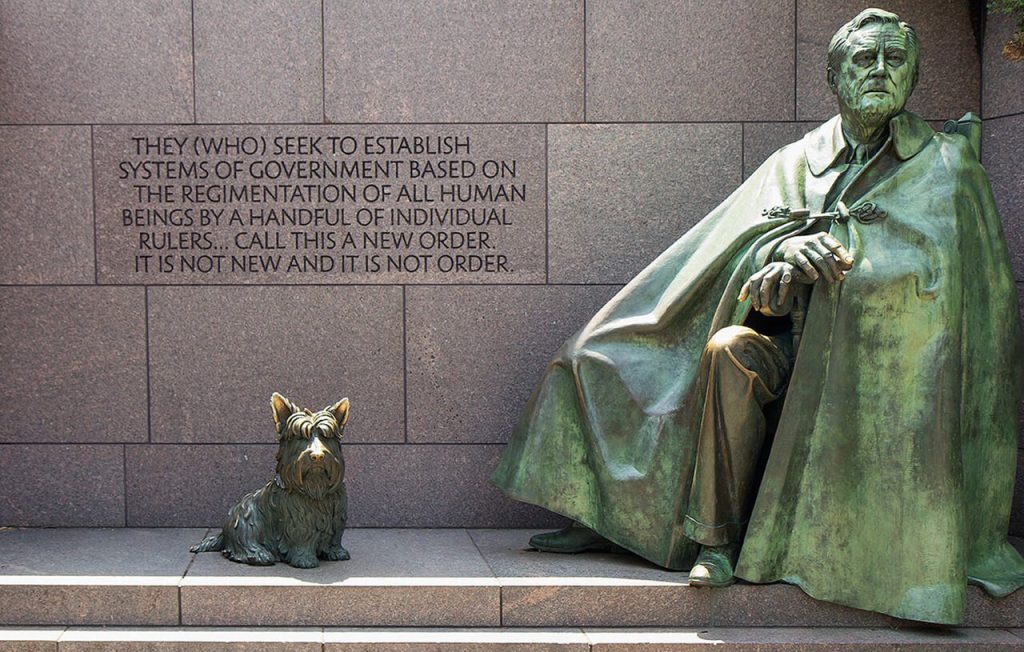
Kahn’s early work includes the Franklin D. Roosevelt Memorial in Washington, D.C. and the Yale University Art Gallery in New Haven, Connecticut. He also designed several private residences, including the Esherick House in Philadelphia and the Kimbell Art Museum in Fort Worth, Texas.
Early Life and Influences of Louis Isadore Kahn
Kahn’s early life was spent in Philadelphia, where he was exposed to the city’s rich architectural heritage. He studied at the University of Pennsylvania and later worked for several architecture firms in the city. Kahn’s early work was heavily influenced by the Beaux-Arts style of architecture, which he studied extensively while at the University of Pennsylvania.
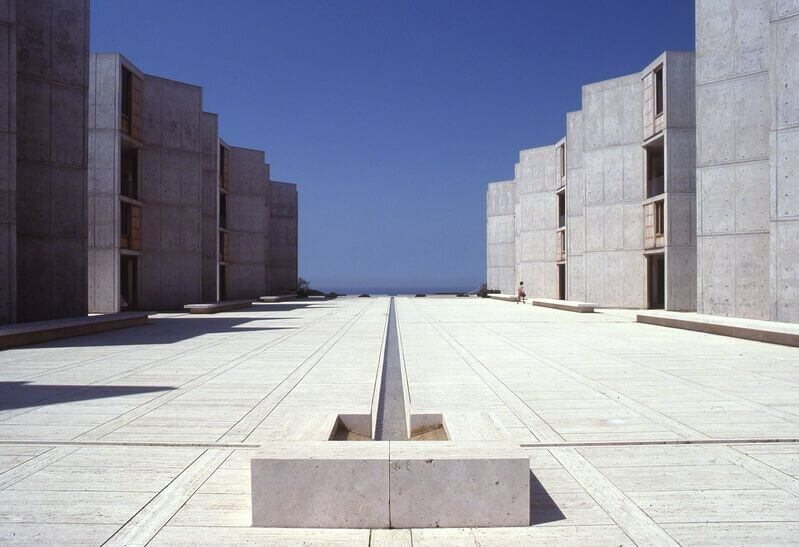
Its grandiose scale and formal symmetry characterized Kahn’s early work. He designed several large-scale public projects in Philadelphia, including the Salk Institute and the Kimbell Art Museum. Kahn’s work evolved in the late 1950s and early 1960s as he experimented with more modernist forms and materials. This period of Kahn’s career is often referred to as his “brutalist” period due to using raw concrete and other industrial materials in his buildings.
Journey to Becoming an Architect
Louis Isadore Kahn established his first office in Philadelphia in 1935 after gaining significant experience working under other firms. He was predominantly inspired by the work of modern architects, specifically Le Corbusier, Frank Lloyd Wright, and Ludwig Mies van der Rohe. He synthesized classical and modern building styles by designing monumental forms that reflected the rich historical past through contemporary construction and design solutions.
Kahn worked extensively on perfecting his materials with his team of specialists. He used innovative combinations of concrete, glass, marble, and steel to seek ideal solutions for his projects. His extensive experience as a professor of architecture at Yale University aided his passionate pursuits of inquiry. He said, “A good question is always greater than the most brilliant answer”.
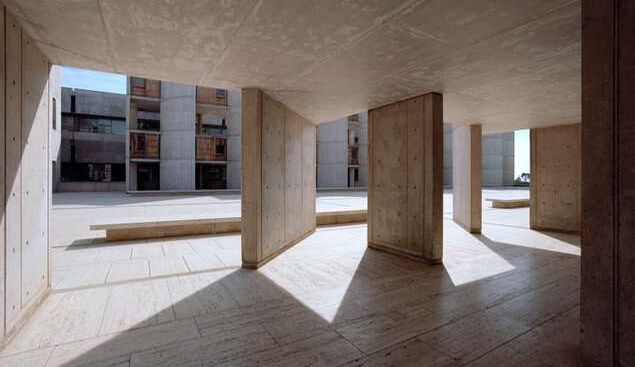
Kahn is best known for his unique approach to architecture, which he called “servant leadership.” This philosophy guided Kahn in designing buildings that would serve the needs of the people who used them rather than the needs of the architects or the owners. This philosophy is evident in Kahn’s most famous works, such as the Salk Institute for Biological Studies in La Jolla, California and the National Assembly Building in Dhaka, Bangladesh.
Kahn’s work has had a profound impact on the field of architecture. His buildings are known for their simple yet elegant design and their use of natural light and ventilation.
Understanding Louis Isadore Kahn’s Philosophies
Louis I. Kahn devised a unique approach to architecture that combined traditional materials and forms with a modernist sensibility. Kahn’s philosophy of architecture is based on the belief that the built environment should reflect the natural world, like Tadao Ando.
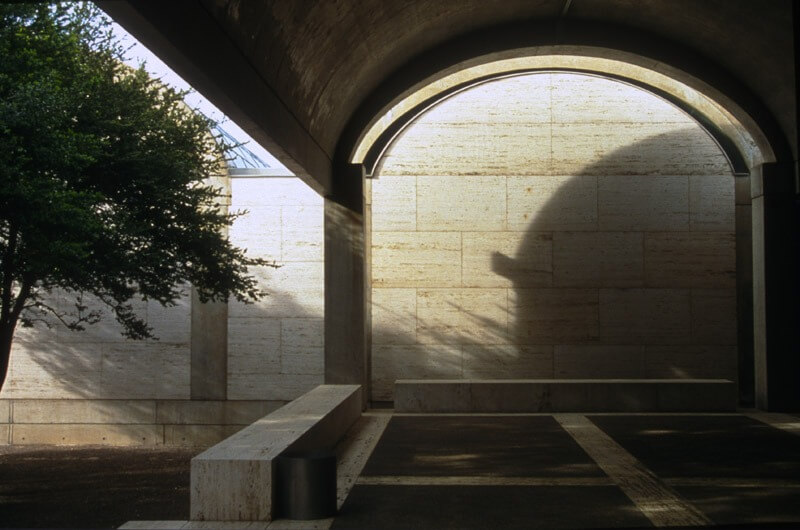
This philosophy is evident in his use of natural light, his use of organic forms, and his use of rough materials. Kahn’s buildings are often described as being “humble” and “human-scaled,” and his use of simple geometric forms has been compared to Russian Constructivist architecture.
Embracing the Power of Geometry
Few architects have embraced the power of geometry quite like Louis Isadore Kahn. His projects often reflect simple, clean lines and focus on the interplay of light and shadow. Kahn was a master of using basic geometric shapes to create stunningly complex and beautiful structures.
One of Kahn’s most famous buildings is the Salk Institute in La Jolla, California. The building comprises a series of rectangular blocks, each with a skylight. The interplay of light and shadow created by the skylights is genuinely stunning.

Louis Isadore Kahn’s use of geometry was more expansive than just the exterior of his buildings. He also used geometric shapes to create beautiful, functional interior spaces. For example, the interior of the Kimbell Art Museum is composed of a series of vaults, each with its skylight. The vaults create a beautiful, airy space filled with natural light.
Kahn’s work demonstrates geometry’s power to create beautiful and functional spaces. His buildings are a testament to the fact that simple shapes can create stunningly complex structures.
The Concept of “Silence and Light”
Certain concepts are so integral to our everyday lives that we often take them for granted. One of these concepts is light. We are constantly surrounded by light, whether the sun shines down on us during the day or the light from a lamp in our home at night.
But what is light, really? And what is its relationship to silence? Louis Isadore Kahn was fascinated by these concepts.
He believed that buildings should be designed not only to meet the functional needs of the people using them but also to reflect the spiritual nature of their purpose. For Kahn, silence and light were two of the most important elements in creating a space conducive to reflection and contemplation.
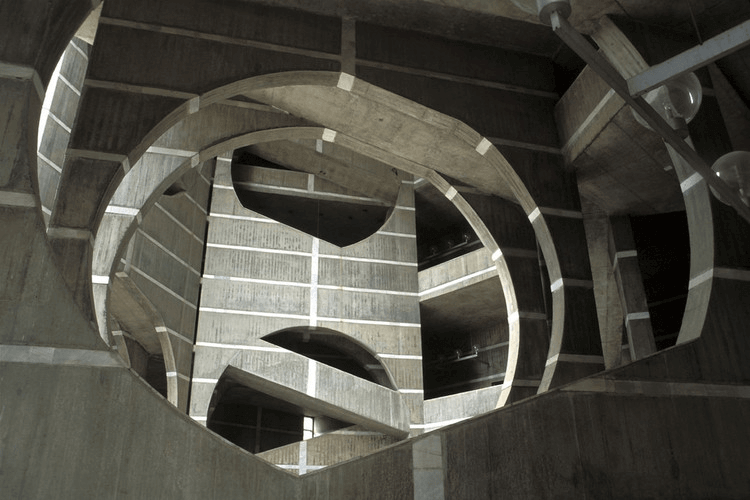
In his essay “Silence and Light,” Kahn writes: “There are two great forces in the world, one good and the other evil. The good is light, and the evil is darkness… In the world of form, good is represented by the light and evil by the darkness. In the world of sound, good is represented by silence and evil by noise.”
Louis Isadore Kahn believed that silence and light were essential to creating a space conducive to reflection and contemplation. He thought that silence was necessary to hear God’s voice and that light was required to see the truth.
Form and Meaning in Architecture
There are many different ways to interpret the phrase “form follows function.” In the most literal sense, the form of a building should be dictated by its function. For example, a factory should be designed differently than a school because the two have different functions. However, the phrase can also be interpreted more broadly to mean that the form of a building should be dictated by its purpose. In other words, a building should be designed in such a way that it can best achieve its intended purpose.
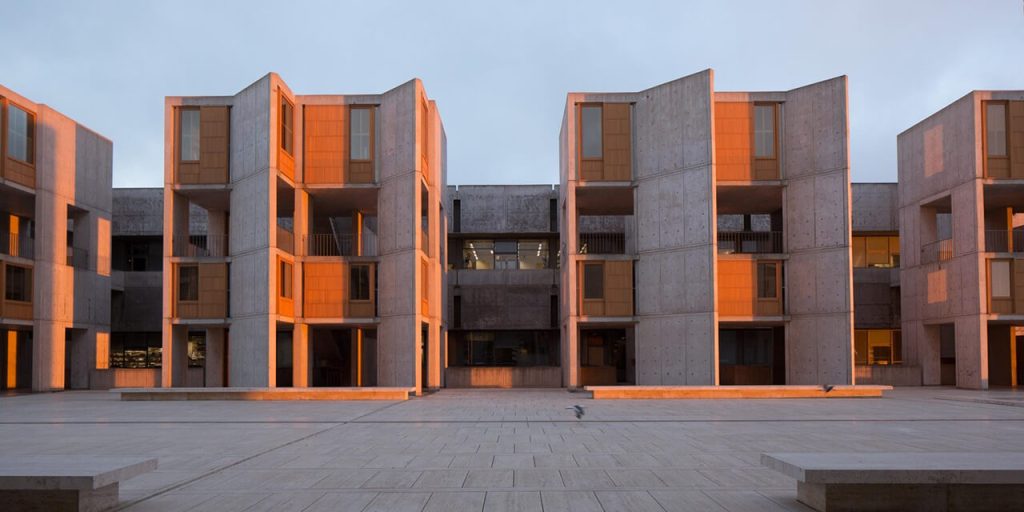
This is the philosophy that Louis Isadore Kahn followed throughout his career. Kahn believed that the form of a building should be dictated by its function, but he also thought that its form should dictate its function. In other words, he believed that the two should be in harmony.
One of Kahn’s most famous buildings is the Salk Institute for Biological Studies in La Jolla, California. The building is designed to house laboratories and offices for scientists, and it is organized into two wings that are connected by a central courtyard.
The form of the building is dictated by its function, as the laboratory wings are designed for scientific research, and the central courtyard is designed for collaboration and communication. However, the function of the building is also dictated by its form, as the laboratories and offices are arranged in such a way that scientists can easily collaborate and communicate with each other.
Kahn’s philosophy of “form follows function, but function also follows form” is evident in all of his buildings. His buildings are designed to be both functional and beautiful, and they are some of the most iconic and beloved buildings in the world.
Monumental Works
In the world of architecture, there are few names as revered as Louis Isadore Kahn. A true visionary in his field, Kahn’s work has left a lasting impression on the world of architecture and continues to inspire new generations of architects.
Kahn’s work was characterized by a deep respect for materiality and an emphasis on light and shadow. He believed that architecture should be experienced as an emotional and spiritual journey, and his buildings reflect this belief.
Buildings by Kahn/Kahn’s Famous Projects:
Hovering between notoriety and anonymity throughout his life, Louis Kahn was America’s ‘foremost living architect’ known for his emphasis on modernity through timeless architecture. Some of Kahn’s most prominent works include:
The Salk Institute, La Jolla, California (1959-65)
The Salk Institute for Biological Studies in La Jolla, California, was built between 1959 and 1965 and inspired by primary geometries. Jonas Salk, who discovered the vaccine for polio, asked that Kahn design a facility that was worthy of a visit from Picasso, an architectural masterpiece that was an inspiring and functional place for research.
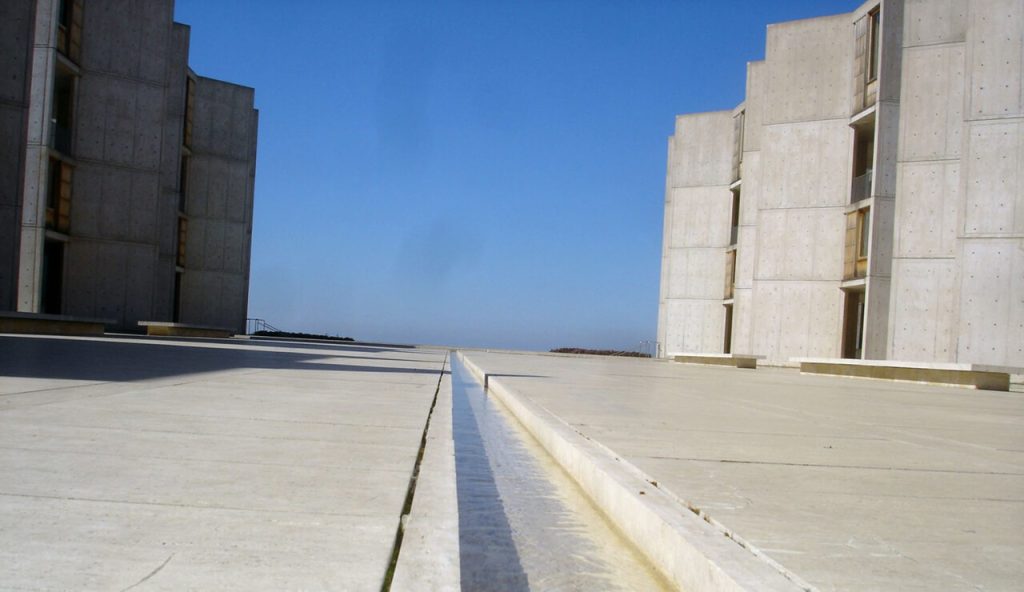
Louis Isadore Kahn designed it in a brutalist style with intelligent use of material and space. The complex constructed from concrete, wood, and travertine reflects its dual purpose as a site for collective scientific discovery and its designer’s penchant for monumental forms. The Salk Institute complex is designed for research and experimentation and promotes the collaborative nature of science through its open laboratory spaces and communal design. Kahn’s innovative use of landscape and symmetry creates a meditative vibe throughout the school. Salk’s layout lauded La Jolla’s scenic qualities. Kahn perfectly rendered the Institute’s vision as a “modern monastery” and designed the building to accommodate these intentions.
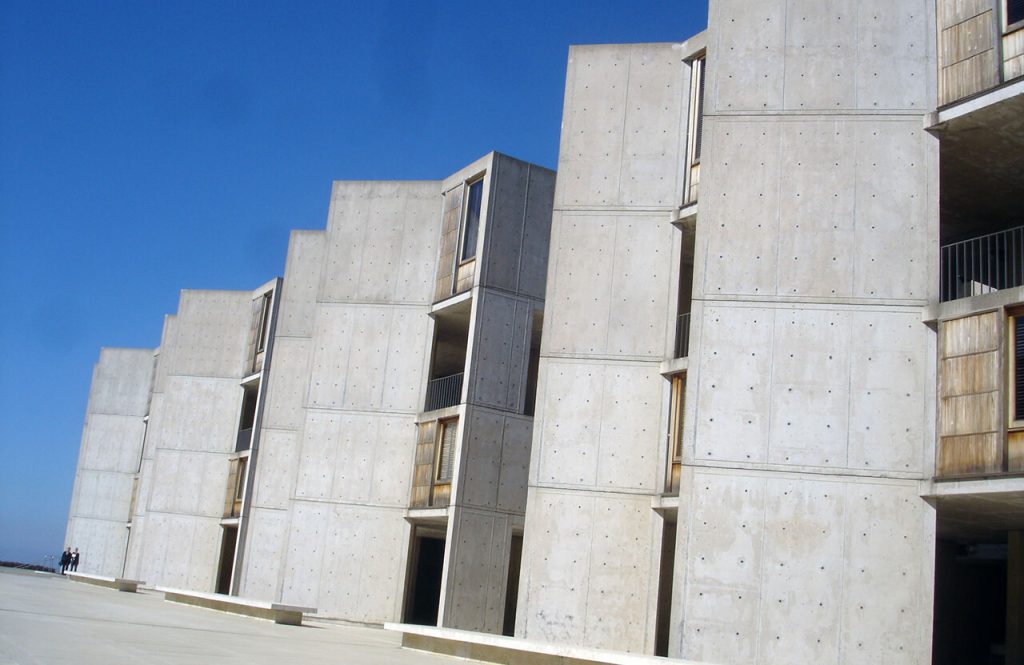
The two main buildings which comprise the Institute are symmetrical and austere on the exterior, devoid of any ornamentation aside from the building materials. Between these buildings lies a court split in the centre by a thin stream leading toward the ocean. This open channel of water and light casts a metaphysical dimension on the research into the hidden laws of nature.
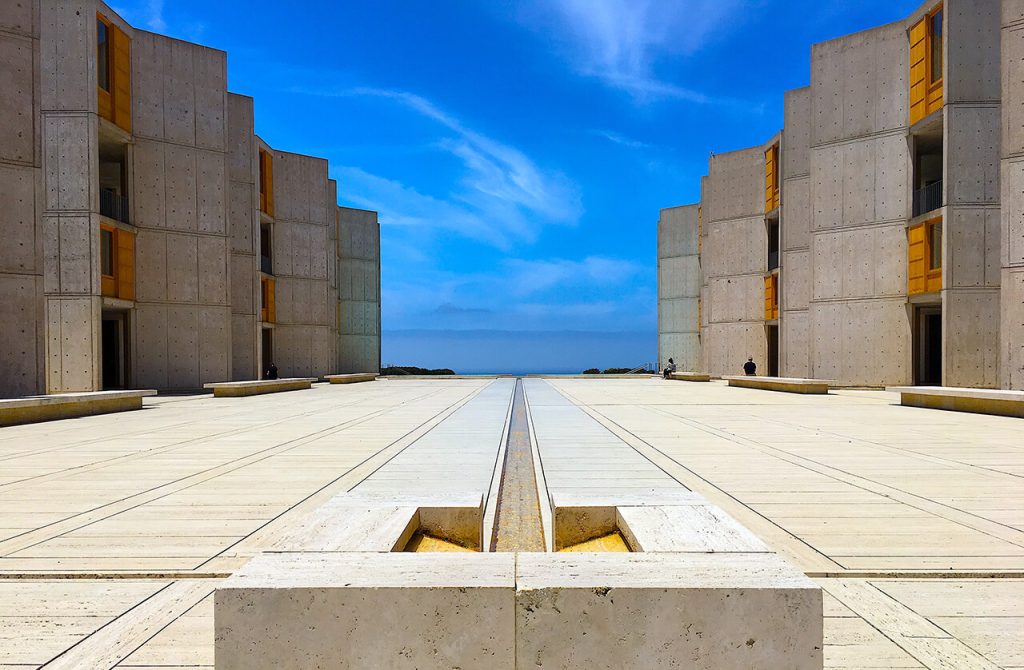
The Institute’s massive look is an example of the monumental forms adopted by modern architecture in the United States after World War II, and the court, stream, severe design, and expression of materials all contribute to this effect. All of these features incorporated in The Salk Institute combined to build his legacy.
Kimbell Art Museum, Fort Worth, Texas (1967-72)
The Kimbell Museum in Fort Worth, Texas (1972) is a visionary masterpiece with cycloid vaults that split open at their crest to admit a crack of daylight to the interiors, diffusing it over polished concrete surfaces.
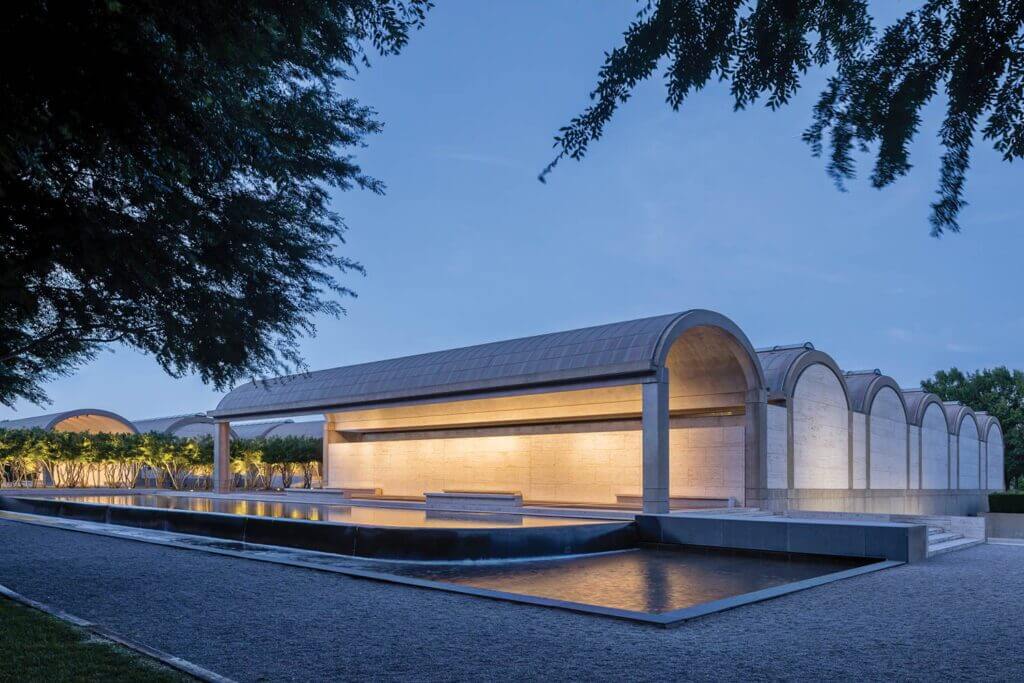
The 16 vaults that Kahn created were each 100 feet long, 20 feet broad, and 20 feet tall. These modules could be easily combined to form different rooms, such as the open vault that serves as a portico at the museum’s entrance.
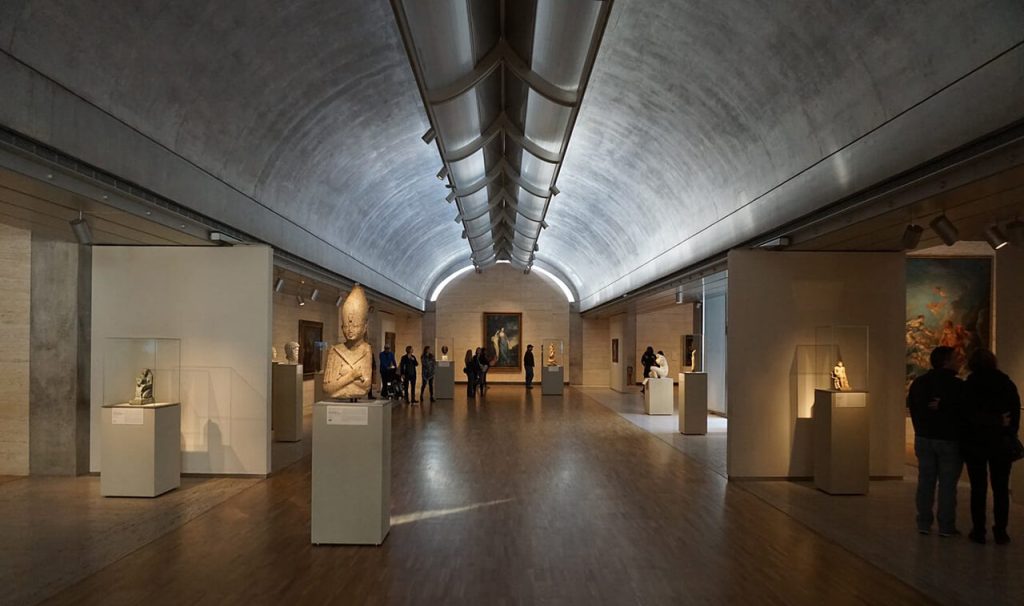
Kahn’s focus in his later works appears to have been on bringing to light the intangible using the simplest of ways. The interweaving of structure, space and light. The skylights are the museum’s crowning achievement, as they provide ideal diffuse illumination for the exhibits.
Yale University Art Gallery, New Haven, Connecticut (1951-53)
The Yale University Art Gallery in Connecticut was Louis Isadore Kahn’s first masterpiece and remains one of his most important works to this day. The Graham Foundation for Advanced Studies in the Fine Arts awarded him a fellowship in 1961 so that he could analyze traffic patterns and create an effective flyover system.
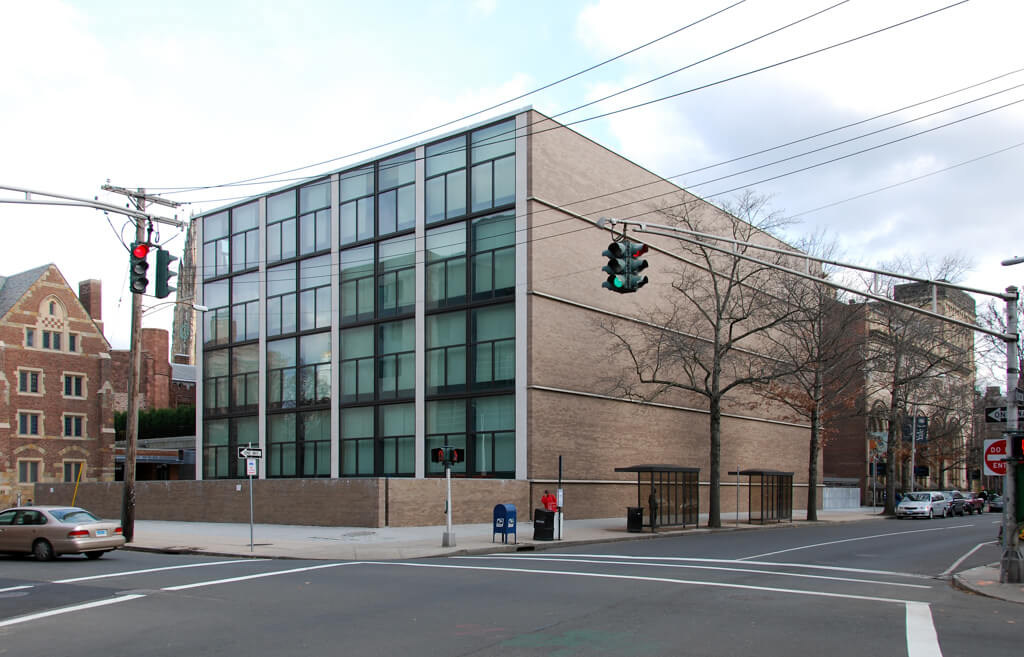
In Kahn’s design for the Yale University Art Gallery, he constructs a building which features many aspects of conventional modern design yet also possesses several unique features which break with the modern tradition. Like several other modern designs, the Art Gallery features a rectangular main volume with sheet windows on several sides. The materials used are similar as well; glass, brick, and steel feature heavily, and the building makes no attempt to conceal them.
National Assembly Building, Dhaka, Bangladesh (1962-74)
The Indian Institute of Management in Ahmedabad (1962-74) and the National Assembly in Bangladesh’s capital of Dhaka (1962-83) were two of Kahn’s first overseas commissions after he had honed his domestic expertise. One of Kahn’s most well-known and admired buildings is the National Assembly in Dhaka.

Exposed structural elements illustrated Louis Isadore Kahn’s emphasis on the importance of function and structure. He believed that architecture should be functional and that the structure of a building should be visible and expressive. He often used exposed structural elements, such as concrete beams and columns, in his buildings, creating a sense of transparency and honesty.
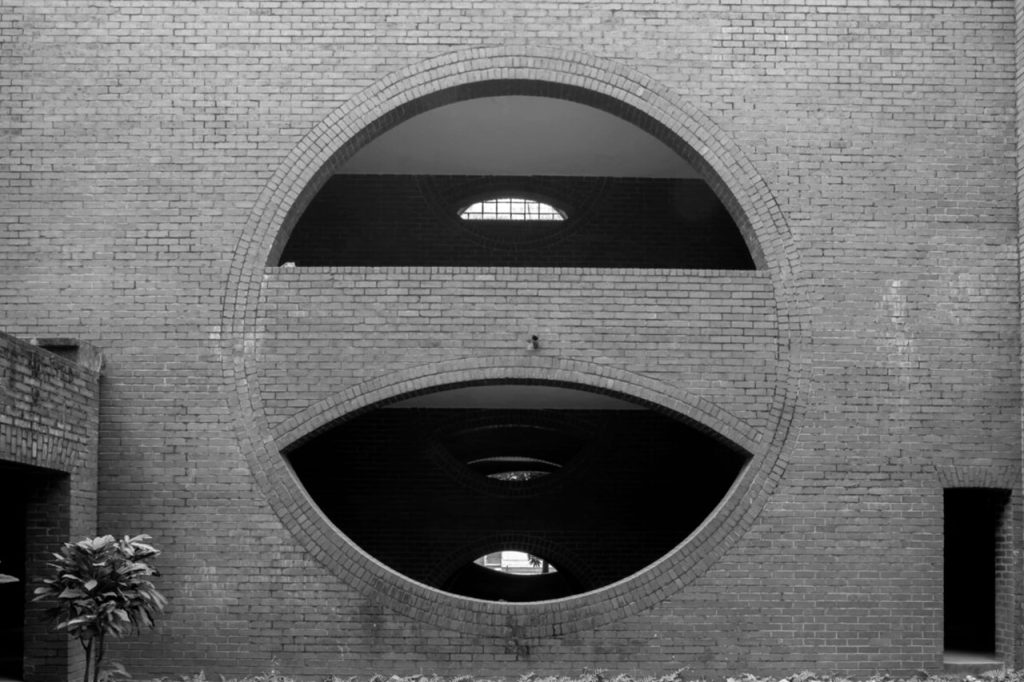
This was likely due to his interpretation of the contradictions of representation in a post-colonial state and his success in fusing together Eastern and Western traditions.

“Salk was a temple for science. Dhaka was a temple for government. Exeter was a temple for learning.” -David Rinehart.
Stylistic Features of Kahn’s Designs:
Louis Isadore Kahn ignored the popular International style of design (lightweight and open) to endorse the use of heavy brick and concrete against glass. Kahn pioneered his own new style of modern architecture through a homage to the symbolic and monumental structures of the past.
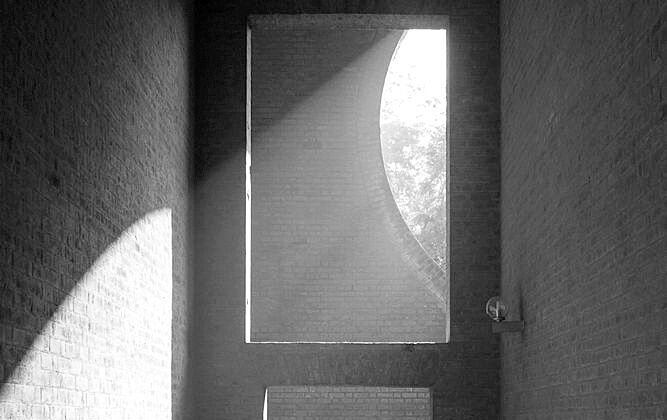
Inspiration from Ancient Ruins
In the annals of architectural history, there are few names as revered as that of Louis Isadore Kahn. A true visionary, Kahn’s work was characterized by a deep respect for the past and a profound understanding of the ways in which architecture could be used to shape the future.
Kahn’s work was heavily influenced by the ruins of ancient civilizations, and he often spoke of the ways in which these ruins had inspired him. In a famous interview, Kahn once said that “the ruined house is the most beautiful house of all.”
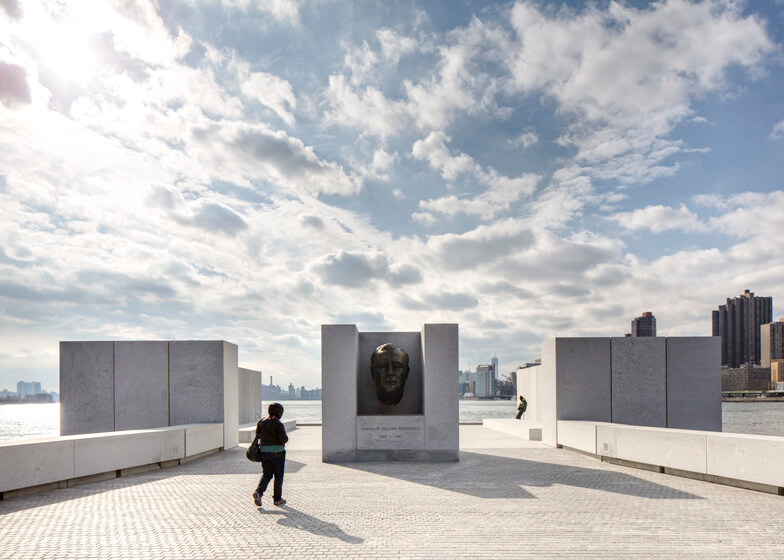
It is easy to see the influence of ancient ruins in Kahn’s work. His buildings often incorporate elements of classical architecture, such as columns and archways. But Kahn also took inspiration from the more humble aspects of ancient ruins, such as the way they are often overgrown with vegetation.
Louis Isadore Kahn believed that architecture should be organic and responsive to its surroundings. He once said that “a building should appear to grow naturally out of the ground as if it were a part of the landscape.” This philosophy is evident in his design for the Salk Institute, which is built into a hillside in California.
Kahn’s work is a testament to the power of inspiration. By looking to the past, he was able to create something truly unique and timeless.
Unconventional Materials and Design of Louis Isadore Kahn
The world of architecture is one that is constantly evolving and growing. With new technologies and materials being developed all the time, architects have more options than ever before when it comes to designing new buildings. However, with so many options available, it can be difficult to know which materials and design techniques to use in order to create a successful project.
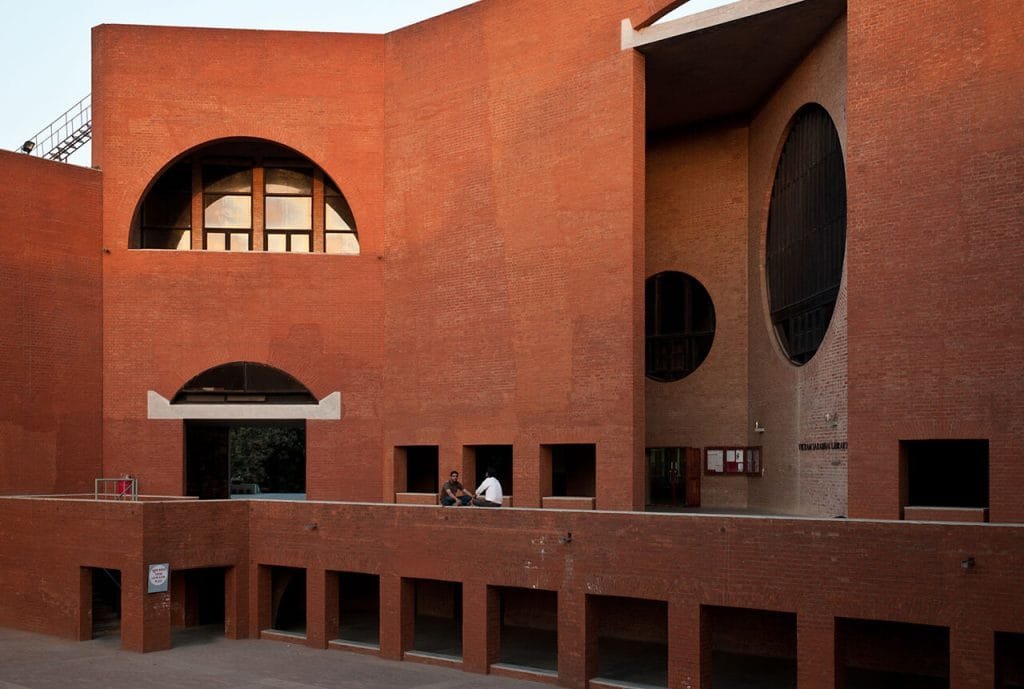
Louis Isadore Kahn is best known for his experimental use of concrete and steel in his buildings. He was one of the first architects to discover innovative methods of putting raw materials to use. Kahn believed that concrete and steel could be used to create buildings that were both strong and beautiful.
Kahn’s use of materials and his innovative design techniques have had a lasting impact on the world of architecture. His buildings are known for their strength, beauty, and uniqueness. Kahn’s work continues to inspire architects today, and his legacy will continue to influence the world of architecture for years to come.
Impact on Modern Architecture by Louis Kahn
Louis Isadore Kahn had a profound impact on modern architecture. His unique approach to architecture was based on his belief that buildings should be designed to reflect the natural landscape. This philosophy is evident in his most famous work, the Salk Institute for Biological Studies in La Jolla, California. The Salk Institute is widely considered to be one of the most important buildings of the 20th Century. Kahn’s other notable works include the Kimbell Art Museum in Fort Worth, Texas, and the National Assembly Building in Dhaka, Bangladesh.
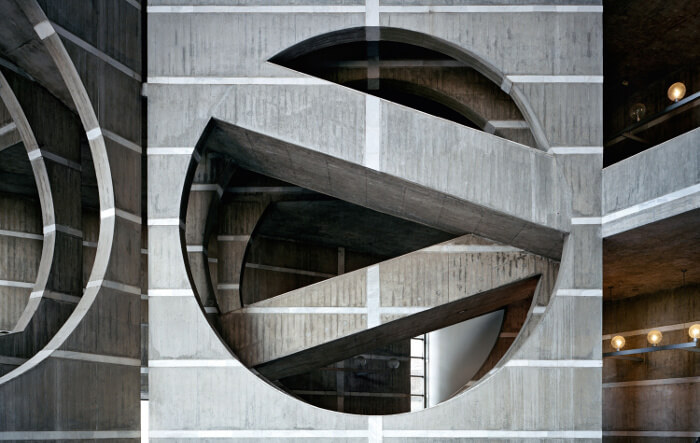
Kahn’s work was influential in the development of the postmodern architectural style. His use of exposed concrete and steel, as well as his focus on the relationship between buildings and their surroundings, were both major influences on the postmodern movement. Kahn’s work continues to be highly respected by architects and critics alike.
The Legacy of Louis Isadore Kahn
During his long career, Kahn designed a wide variety of buildings, including office towers, factories, schools, and private homes. However, he is best known for his civic buildings, which include the Kimbell Art Museum in Fort Worth, Texas, and the National Assembly Building in Dhaka, Bangladesh.
Louis Kahn’s work has had a lasting impact on the modernist movement and the architectural profession. His ideas about simplicity, form, and materiality have been hugely influential, and his work continues to inspire architects today.
Primarc Studio Architects
The Primarc Studio editorial team consists of architects and designers specializing in modern residential projects, interior designs and commercial designs across Pakistan. Together, we share insights on design trends, construction costs, and project case studies.


